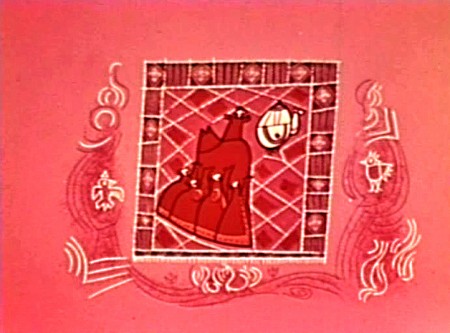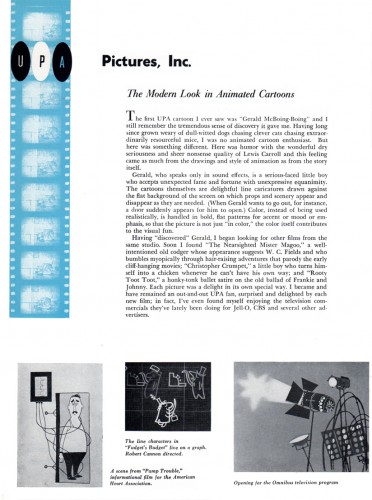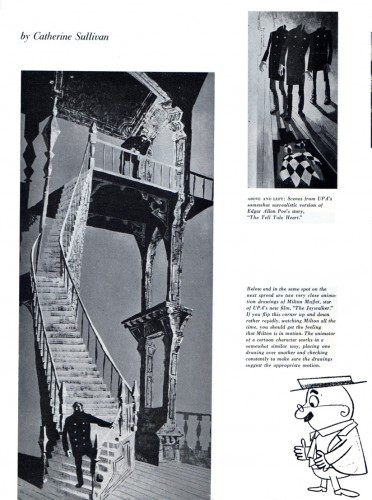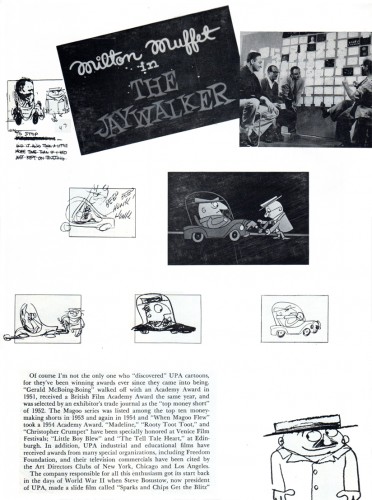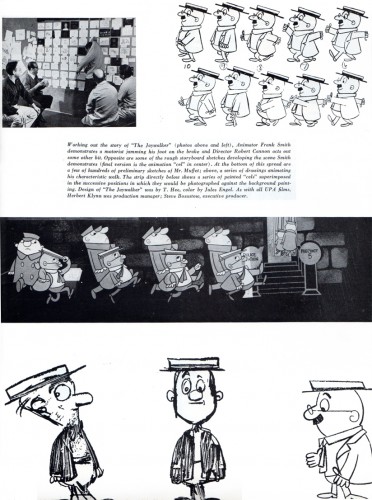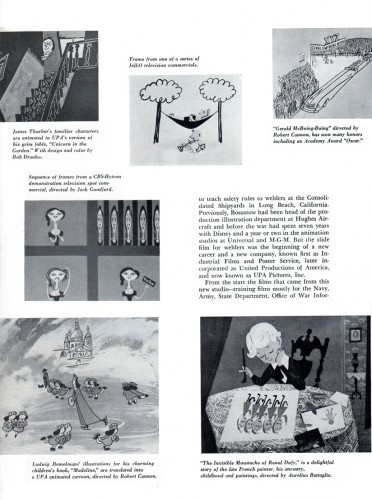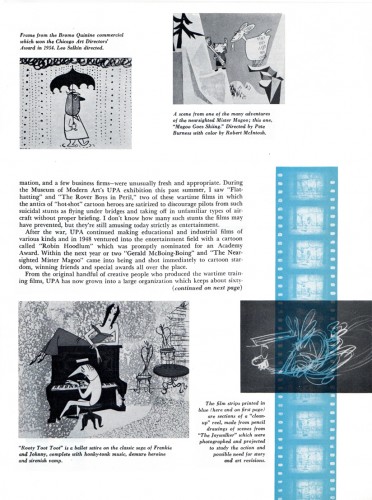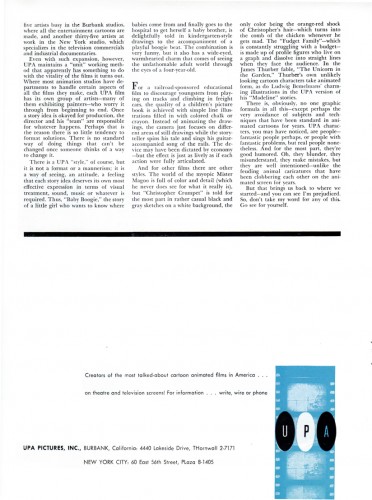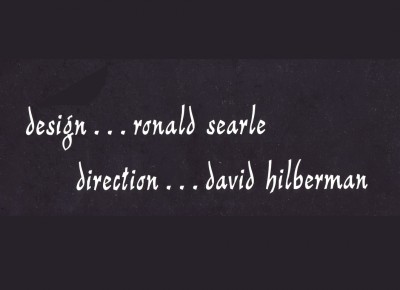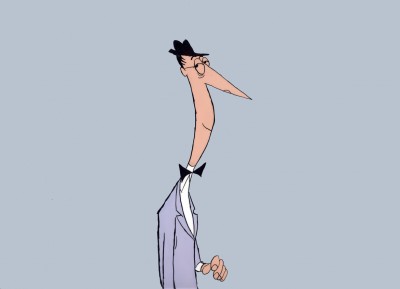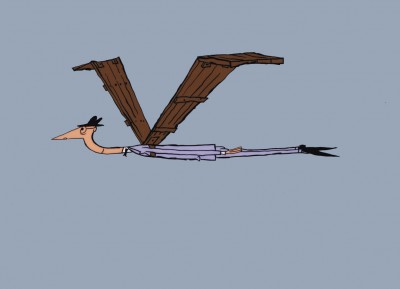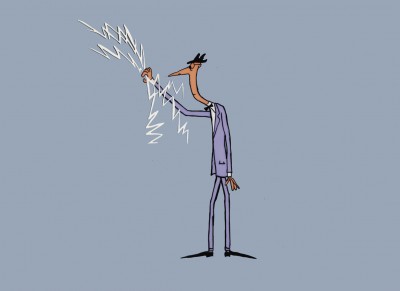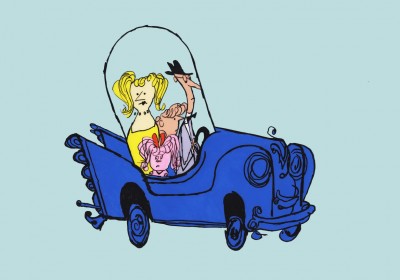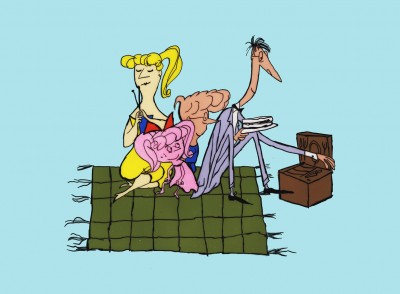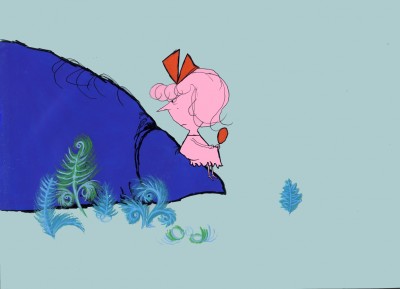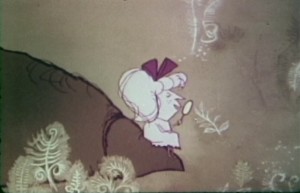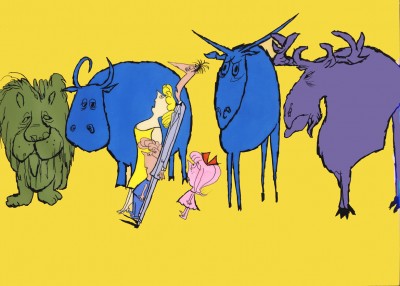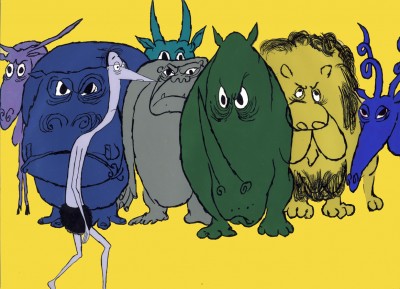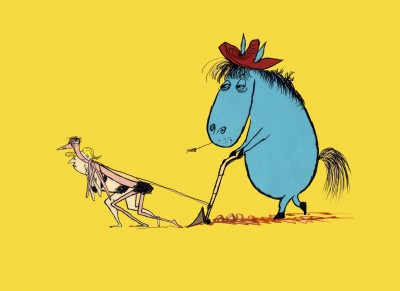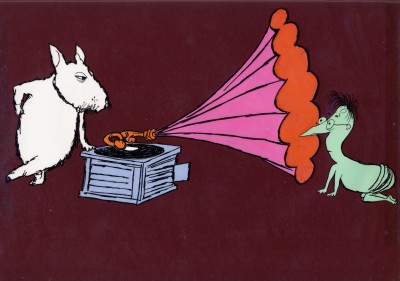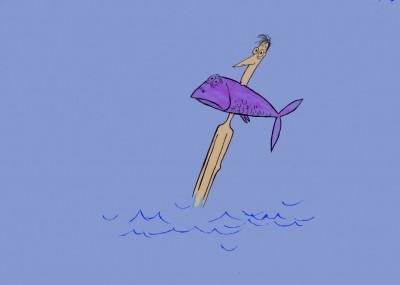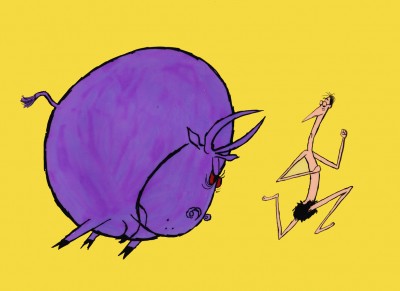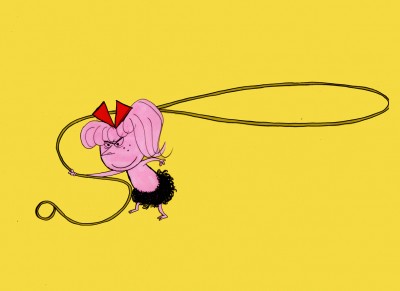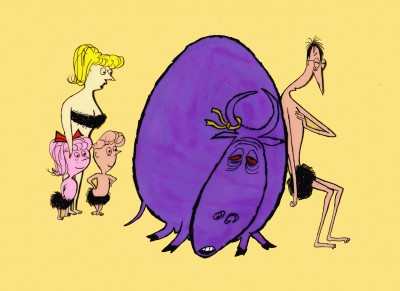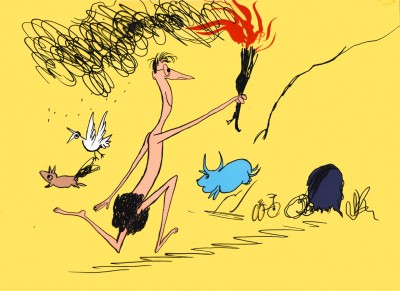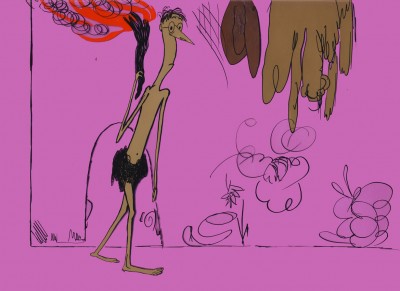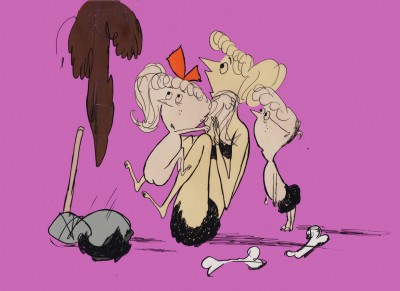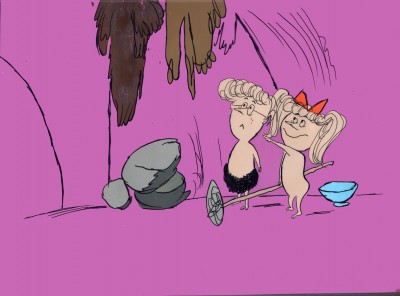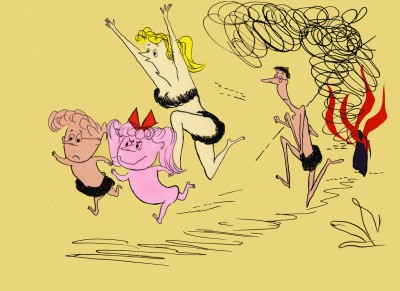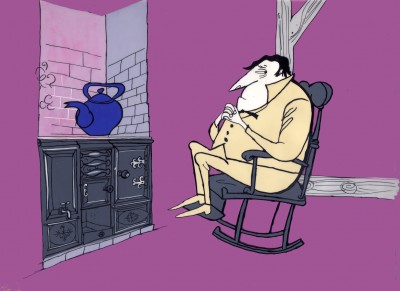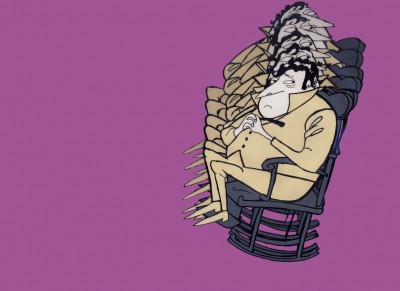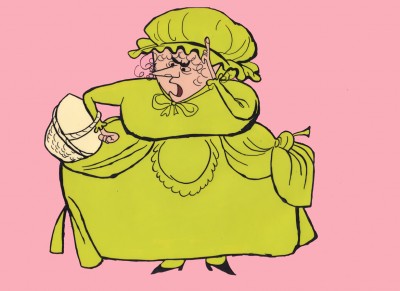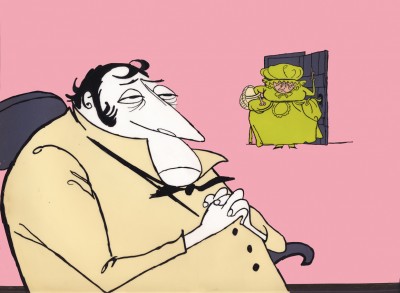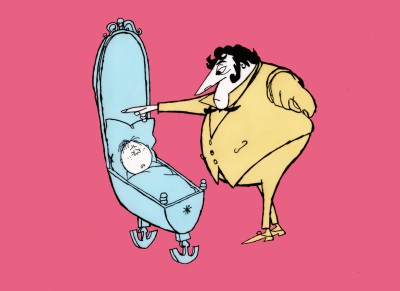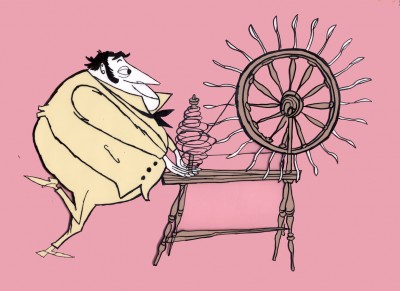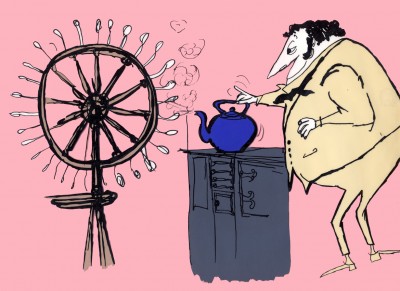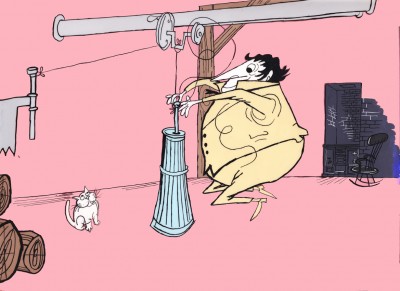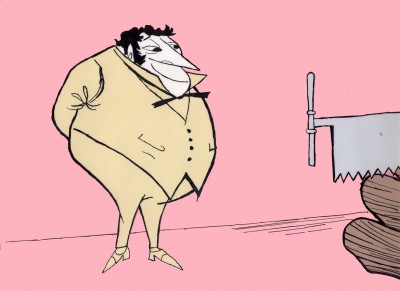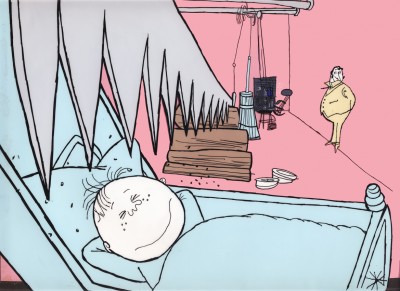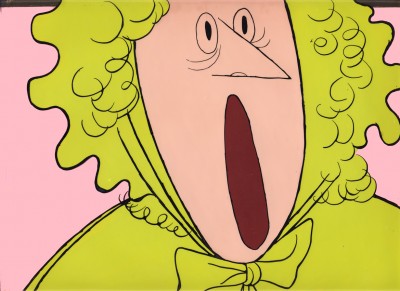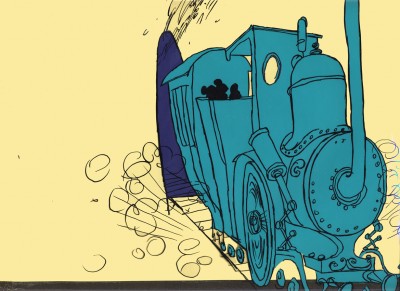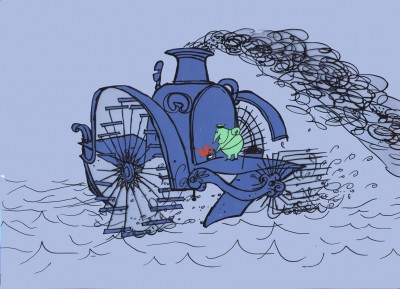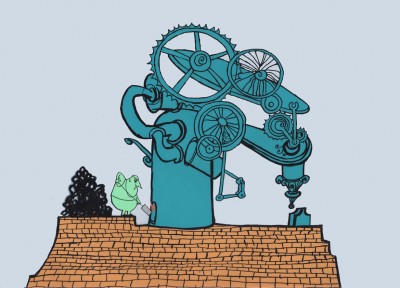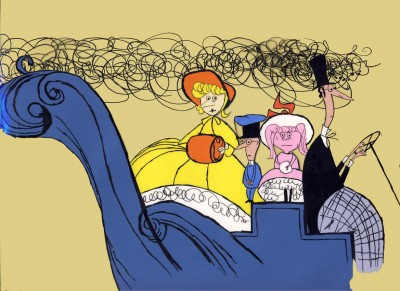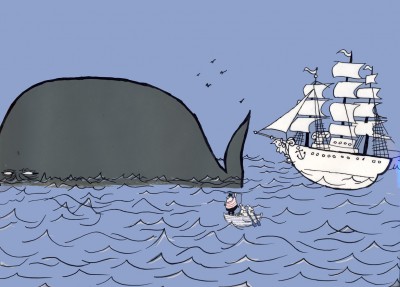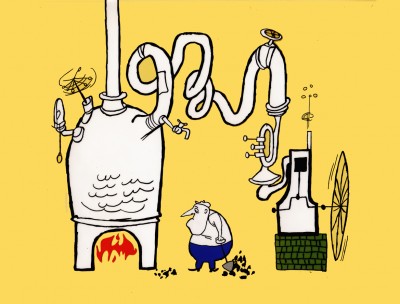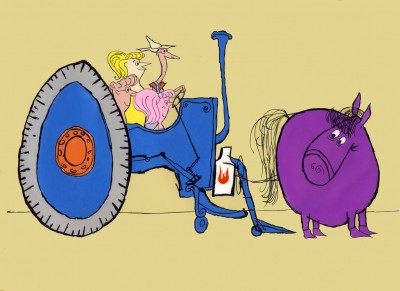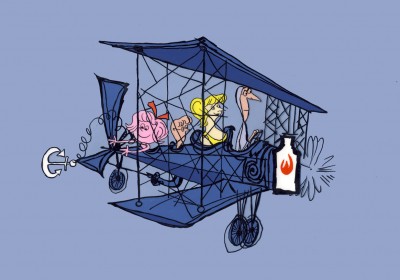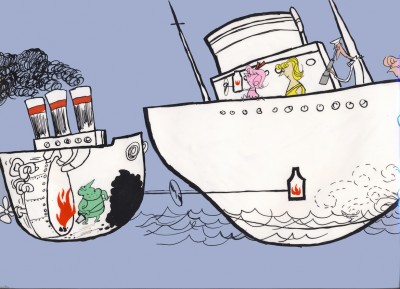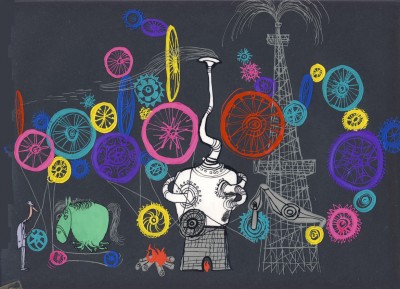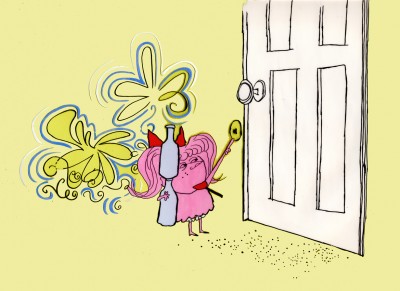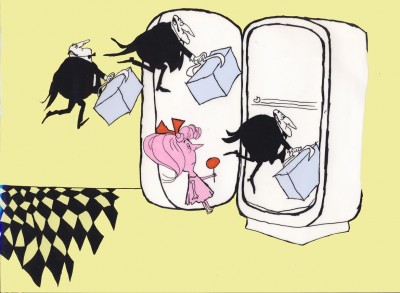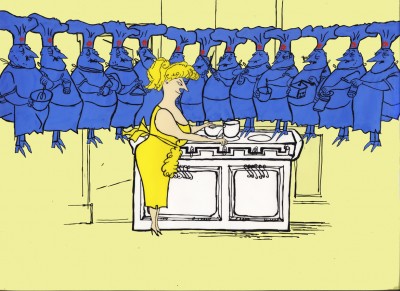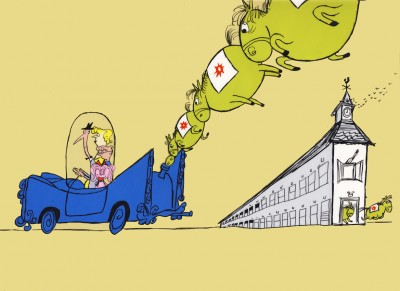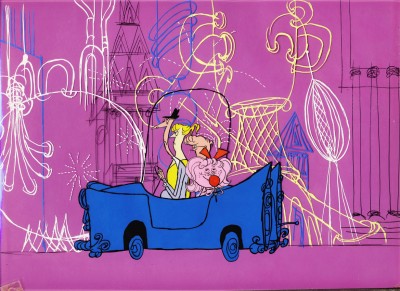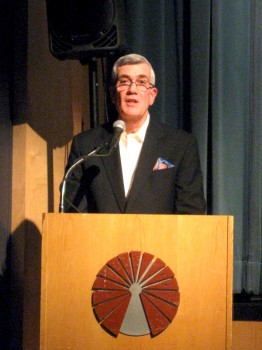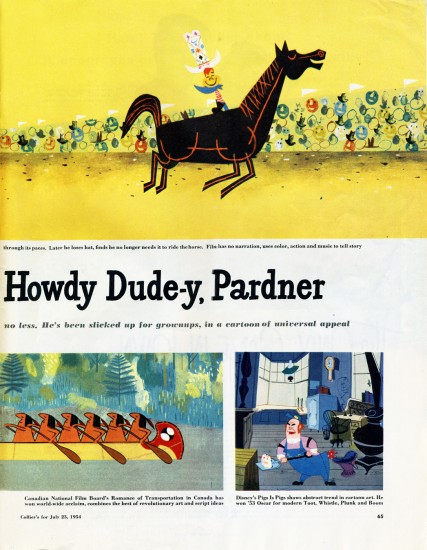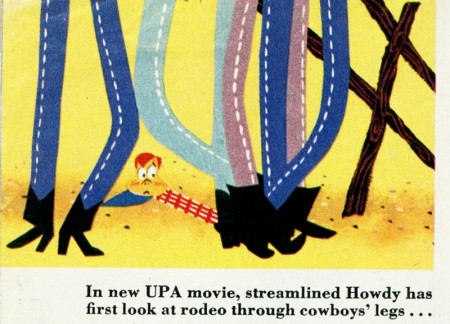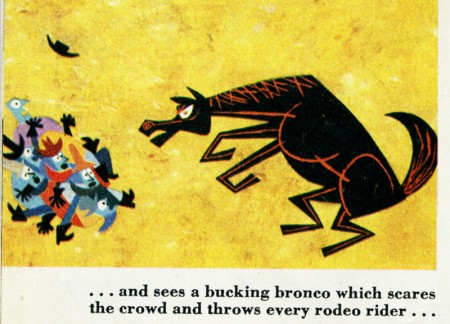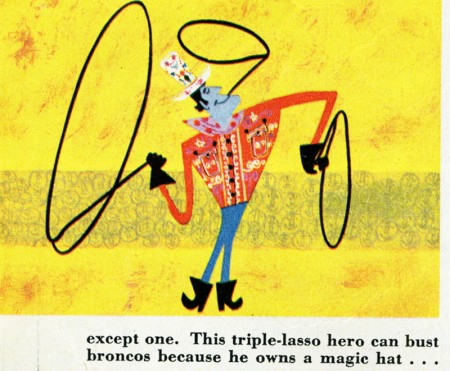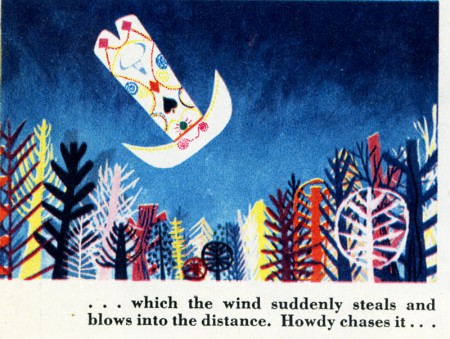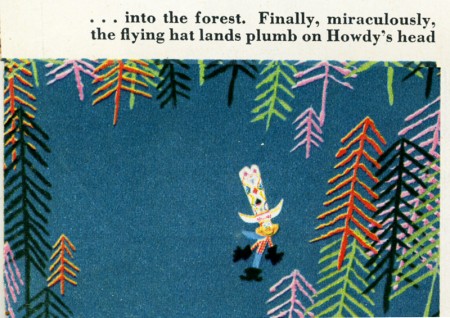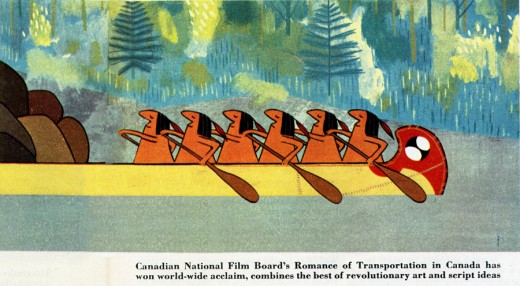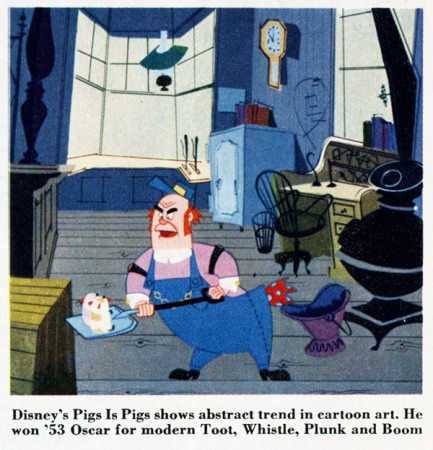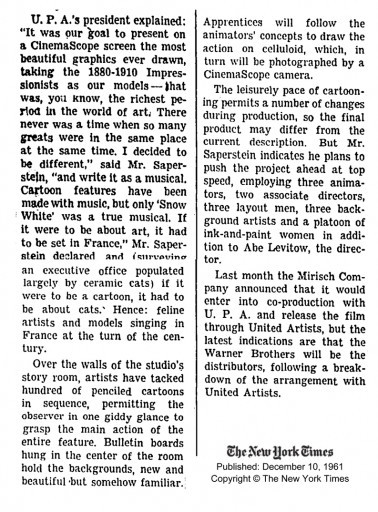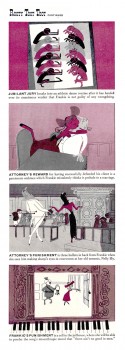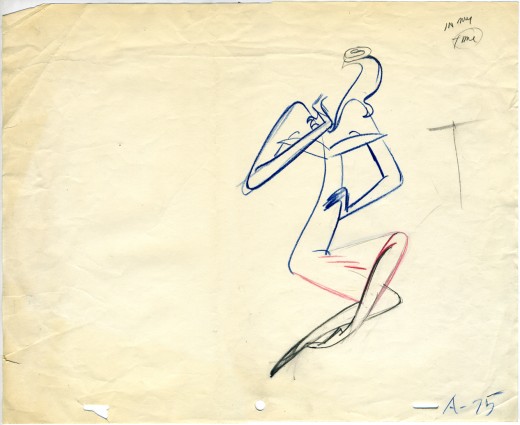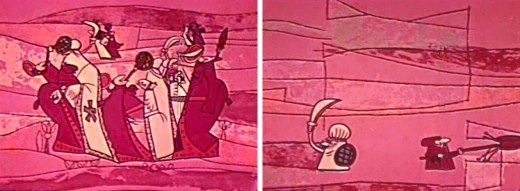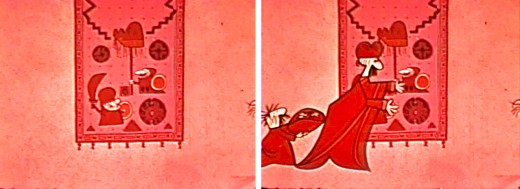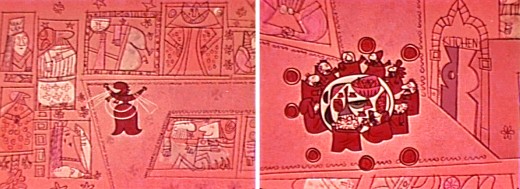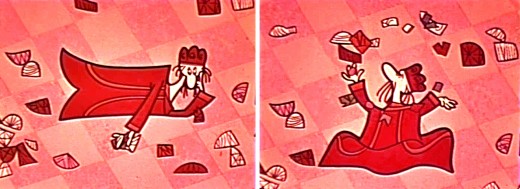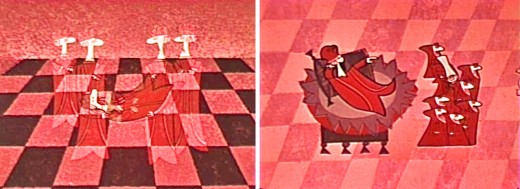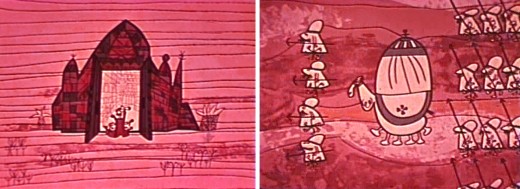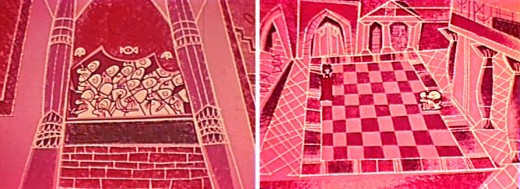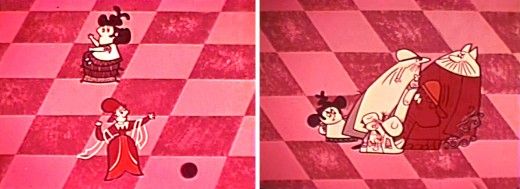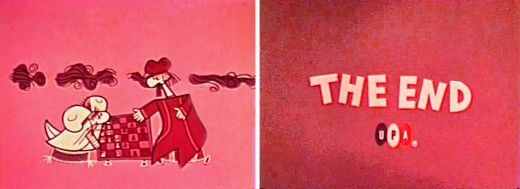Category ArchiveUPA
Articles on Animation &Bill Peckmann &UPA 24 May 2011 07:00 am
UPA mailer
- Bill Peckmann sent me this in case I hadn’t already posted it. In fact, I’ve never seen it before so it’s a bit of a treasure to me, a big fan of UPA. Here’s Bill’s note:
- This is a studio brochure/mailer* reprinted from American Artist Magazine Nov. 1955. I remember reading the article in high school, it had a huge impact. I remembered it for many years after because of the scarcity of animation articles at that time. And, because it appeared in an “art” magazine, it seemed to make “cartooning” legit.
Did Disney art ever appear in an “art” magazine around this time?
*This brochure was given to me by Ruth Mane (UPA Alumni) many, years ago.
And now, Bill’s passed it onto us. Many thanks, Bill.
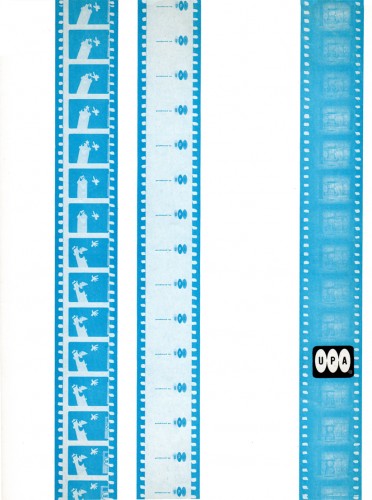 1
1(Click any image to enlarge.)
There’s no doubt this article followed up on the Museum of Modern Art‘s 1955 show of UPA art. Amid Amidi posted an extraordinary piece about this show on his Cartoon Modern site. By the way, this is an exquisite site. It’s just a shame that Amid let it lay after his promotion for his book Cartoon Modern. Take some time and browse around that site when you have some time.
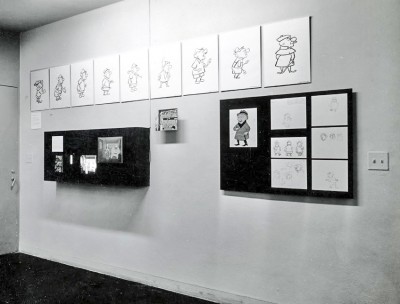
A snap of one of the walls at the 1955 MoMA UPA Exhibit.
(from Amid Amidi’s site, Cartoon Modern.)
Animation Artifacts &Independent Animation &UPA 02 May 2011 07:40 am
Hilberman’s Energetically Yours
- Energetically Yours was a film produced for the Standard Oil Company and directed by UPA co-founder Dave Hilberman. Animation production was supervised at both Playhouse Pictures (suprvised by Bill Melendez) and Quartet Films (supervised by Art Babbitt).
The film was designed by Ronald Searle and is, as expected, quite creative. Unfortunately, the copies of the film floating about today are all color deteriorated – everything has turned to a muddy reddish hue. In fact, the artwork for the film was very colorful. Matt Jones’
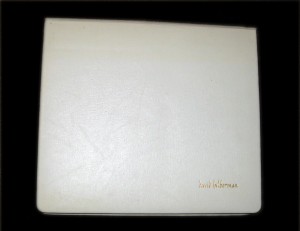 blog Perpetua (a tribute blog to Ronald Searle) has an excellent piece about Searle and this film. It includes numerous still photos of Searle and Hilberman and gives an idea of the full production.
blog Perpetua (a tribute blog to Ronald Searle) has an excellent piece about Searle and this film. It includes numerous still photos of Searle and Hilberman and gives an idea of the full production.
I’d recently been contacted by David Hilberman’s son, Dan Hilberman. He had a collection of about 50 cells from the film that had been preserved by Mary Cain in a scrapbook. She’s backed each cell with a flat colored piece of paper. _______________Mary Cain’s scrapbook
Dan has sent me scans of these cells, and
I’m going to post them here.
I did some slight adjustments in photoshop. The BG colors often had some cel flash on them or reflections. Some parts of the BG papers also had color deterioration. I replaced all with a flat color and in a couple of cases made a tighter composition. My whole purpose was to focus in on the cel colors. (I made no adjustments to any of the characters or outlines.)
I’d urge you to take a quick look at the cells, read Matt Jones’ blog and watch the pinkish film on YouTube. Then return to see what the colors actually looked like.
 1
1
Many thanks to Mary Cain for preserving these cells, and to Dan Hilberman for sharing them.
Events &UPA 16 Dec 2009 08:42 am
UPA Show
– I’m sad to report that Roy Disney died this morning. He would have been 80 on January 10th. He was battling cancer. The obvious connection to the family of the founders is going to be missed in the boardroom. I suggest you read Nikki Finke‘s commentary on his backroom career at the Disney of Eisner.
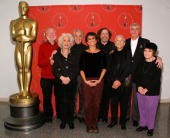 - Monday night there was the tribute to UPA that was hosted by the Motion Picture Academy and moderated by John Canemaker. A number of UPA-NY alumni gathered for the occasion. If you go here you can see a group photo of those artists in attendance.
- Monday night there was the tribute to UPA that was hosted by the Motion Picture Academy and moderated by John Canemaker. A number of UPA-NY alumni gathered for the occasion. If you go here you can see a group photo of those artists in attendance.
The 35mm film prints were brilliant beyond my expectation. I think this is the first time I’ve actually seen the extra-ordinary colors of The Tell Tale Heart or Rooty Toot Toot. There was a point in the latter film when a character dissolves from white on light gray to a pale blue color. There are unbelievable white on whites of the final section of the film. It becomes such an amazing and daring choice by John Hubley when you can see that it wasn’t just a deteriorated print – which is the way I’ve seen this film my entire life – but a decision. Every inch of this film is a masterwork that only grows with every screening I see.
Attandance at the show wasn’t as good as I’d expected, but the theater was half full. Very few younger people. I suppose it’s not easy to compete with YouTube’s degenerated copies of these films. They offer the luxury of no effort.
Going to the show I realized that this is probably the last time in my life I’ll see these films projected with such loving care with prints as rich as they were in the original. Certainly, this is the last time the group of ex-UPA workers will be assembled and honored. Howard Beckerman, Tissa David, Vinnie Cafarelli, Ruth Mane, Edna Jacobs have all been a part of my life. Emily Hubley and her husband, Will, were also there. It was fun talking with them throughout the dinner afterward.
Here are some quick snaps (meaning bad quality, my apologies) of some of the guests.
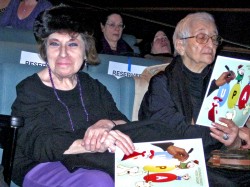 1
1 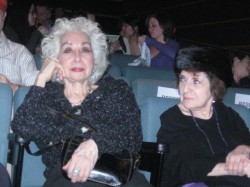 2
21. Ruth Mane and Tissa David. 2. Edna Jacobs and Ruth Mane.
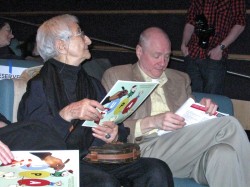 3
3 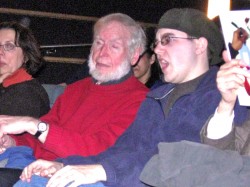 4
4
3. Tissa David alongside Joe Kennedy, John C’s companion.
4. Howard Beckerman and his student.
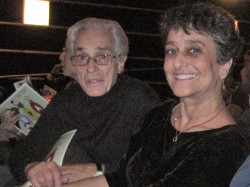 5
5 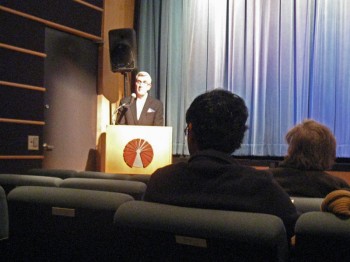 6
6
5- Vinnie Cafarelli and Candy Kugel – partners.
6. John Canemaker once he’s taken the podium.
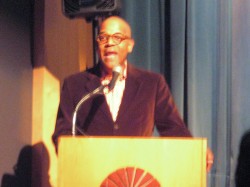 7
7
Patrick Harrison, the Academy leader for the NY chapter, introduces John Canemaker.
Here’s the program we received, front and back. Tissa mentioned that she would have liked to have seen some of the artists printed alongside the films.
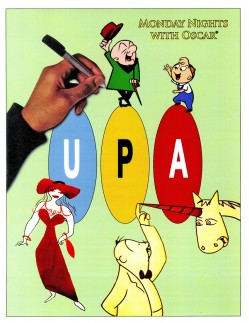 F
F 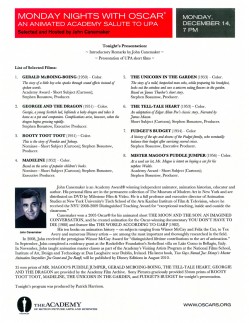 R
R(Click any image to enlarge.)
_________________
- Yesterday, I posted something about The Brave Little Tailor. I received an email from Tim Hodge saing that he had an original drawing from the film going on auction in January.
- “It’s part of a fundraiser to benefit my son who was in an auto vs train accident in August of this year. His recovery is ongoing, but slow. Being a self employed artist, our short term insurance was adequate for most things, but not quite something of this magnitude.”
You can check out his site here to get more information and to see other art for auction.
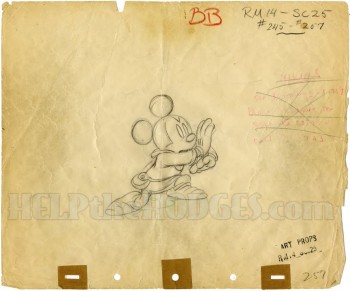
This is the drawing to be auctioned in January.
I think it’s a Frank Thomas drawing.
Articles on Animation &Events &UPA 14 Dec 2009 08:35 am
Howdy Doody’s Hat Trick
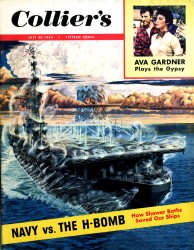 - Not too long ago, Cartoon Brew had an article about Gene Deitch and the short he directed, Howdy Doody and His Magic Hat. Apparently, the film was held back by Bob Smith and was never officially released.
- Not too long ago, Cartoon Brew had an article about Gene Deitch and the short he directed, Howdy Doody and His Magic Hat. Apparently, the film was held back by Bob Smith and was never officially released.
An issue of Collier’s Magazine was mentioned which had printed an article about this UPA short. I recently picked up a copy of the magazine and am posting the two-page article. Interesting that the author of the article says that the short animates cut-outs rather than the “usual, costly multiple-drawing system.” It doesn’t look like cut-outs, but you can’t properly tell from the stills. They also state that the film had a budget of $15,000.
Hopefully, the short will someday show up on our radar, and Gene Deitch will have the pleasure of seeing his first bit of direction again. Until then, we can be grateful that Collier’s did a colorful article on the cartoon.
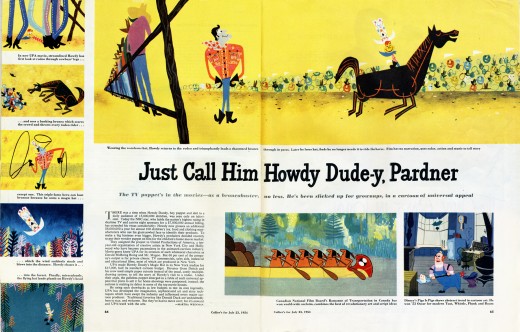
Here’s the full two page spread.”
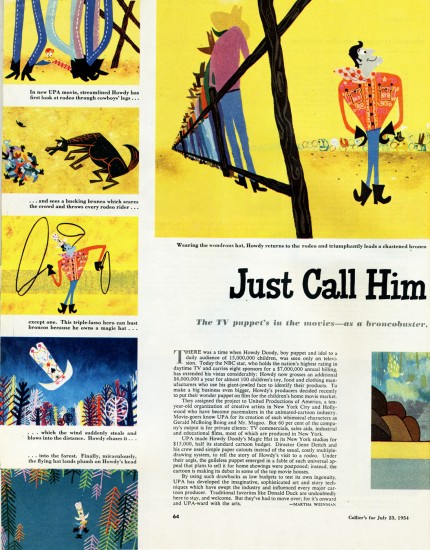 a
a
Here are the two separate pages larger.
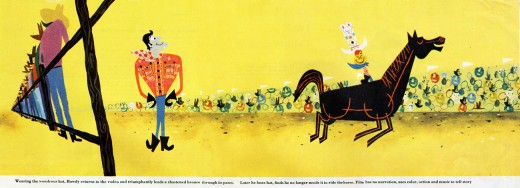
Here are all of the pictures separated and enlarged.
__________________
-Don’t forget that tonight there’ll be a show of some of the all-time finest UPA cartoons. This will take place at the Lighthouse, 111 East 59th Street, between Park and Lexington avenues. $5.00 admission ($3.00 for members).
The films include:
GERALD MCBOING BOING, MISTER MAGOO’S PUDDLE JUMPER
ROOTY TOOT TOOT, MADELINE, THE TELL-TALE HEART
THE UNICORN IN THE GARDEN, FUDGET’S BUDGET and
GEORGIE AND THE DRAGON
(Personally, I think ROOTY TOOT TOOT is one of the greatest short films ever created and deserves all the attention it can get.)
Pristine 35mm prints will be screened. Not an everyday occurrence.
Daily post &Disney &Music &UPA 31 Jul 2009 07:16 am
Animation Music
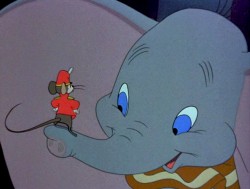 - There’s an extensive review of the music for the Disney animated features, from Dumbo on up through the Fifties. The article was written by Ross Care who is a composer and a film music historian specializing in animation. This was originally written for Cinemascore and can be found on their site – here.
- There’s an extensive review of the music for the Disney animated features, from Dumbo on up through the Fifties. The article was written by Ross Care who is a composer and a film music historian specializing in animation. This was originally written for Cinemascore and can be found on their site – here.
The article gives reports on the music of composers Oliver Wallace, Paul Smith, Ed Plumb and Charles Wolcott. It talks about Dumbo and the post Dumbo features: Victory Through Air Power, Saludos Amigos, and The Three Caballeros. Make Mine Music, Melody Time, Song Of The South, So Dear To My Heart, Fun And Fancy Free, Ichabod And Mr. Toad as well as Cinderella, Peter Pan and Alice in Wonderland.
If you have any interest in the history of film music, particularly applicable to the Disney films, this is worth reading.
- Here’s a review of the film music of UPA written back in the Fifties for Films In Review magazine. I don’t have the exact date of this article I’d saved for the past thirty years.
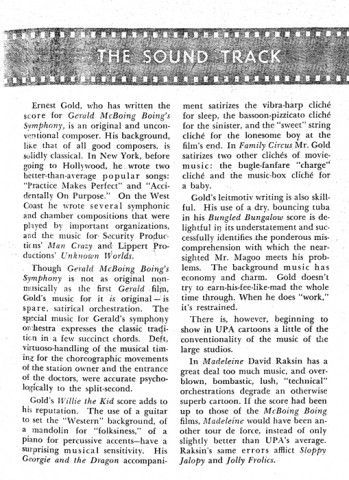 1
1 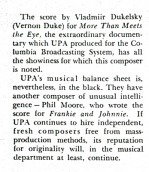 2
2(Click any image to enlarge.)
Animation &Animation Artifacts &Chuck Jones &UPA 02 Jul 2009 08:01 am
Gay Purr-ee
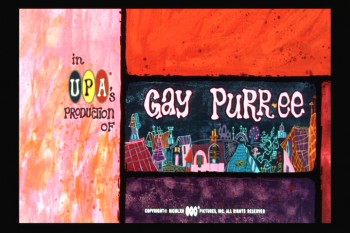 - I remember in 1962 going to the movies to see Gay Purr-ee, the very first showing – a late morning matinee. It was a bus ride away, but I was a fan big fan of UPA at the time. A 15 year old child who knew a bit about the impressionists and had read a lot about the early incarnation of this animation studio. The only shorts I’d seen were on the original Gerald McBoing Boing show, back in the fifties (when I was much younger.)
- I remember in 1962 going to the movies to see Gay Purr-ee, the very first showing – a late morning matinee. It was a bus ride away, but I was a fan big fan of UPA at the time. A 15 year old child who knew a bit about the impressionists and had read a lot about the early incarnation of this animation studio. The only shorts I’d seen were on the original Gerald McBoing Boing show, back in the fifties (when I was much younger.)
1001 Arabian Nights with Mr. Magoo had impressed me in some of its parts, but the notion of animating in impressionist art was more exciting to me.
I remember being impressed with the voice cast and soundtrack (which I quickly bought), some of the imagery and some bits of the animation. I loved the thick/thin outlines of the characters. I went back the next day to see the film again at a closer theater. This time I went late afternoon, which was a mistake. The kiddee matinee had brought a glob of ice cream melting down the center of the theater’s screen. It was hard to enjoy the beautiful painting with this dark, moving scar gracing the middle of the screen.
Despite seeing the film another half dozen times, since then, I didn’t really know much about the film’s production other than the credits I was able to view on screen. The Abe Levitow site offers a number of background paintings by the original designer, Victor Haboush, as well as Corny Cole and Bob Inman.
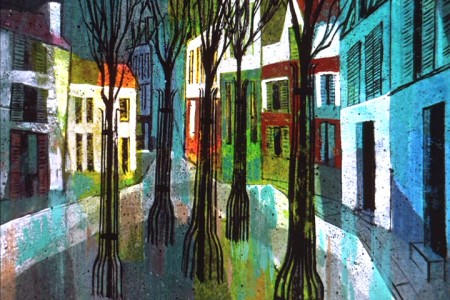
Here are two by bg’s Victor Haboush that are featured on the Levitow site.
I just earned from Tom Sito‘s blog that Mr. Haboush died on May 24th at 85.
He was a gifted designer and artist.
.

.The paragraph written on that site tells about the layoffs at Disney after Sleeping Beauty and how this brought an influx of talent to UPA. Many had worked on the Dick Tracy and Mr. Magoo tv cartoons that were produced but the feature better utilized their talents.
This isn’t much different than the story Jack Kinney tells in his book, Walt Disney and Other Assorted Characters. After he was pushed out of Disney, he ended up directing Magoo’s Arabian Nights. (He talks so little of it that he gives the impression he didn’t enjoy the experience.)
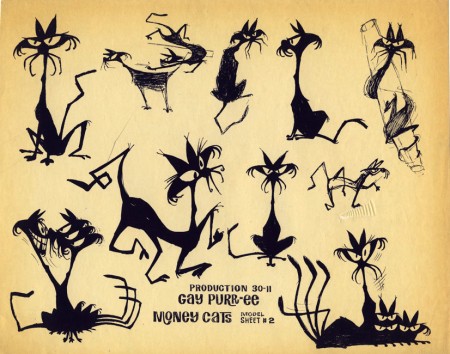
This is a Corny Cole model of the “Money Cats” from the film.
.
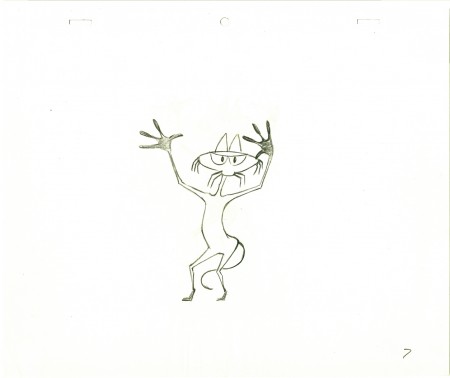
This is an animation drawing I have of one of them.
It’s not as angular or graceful as Corny’s drawing, but I still like it.
.
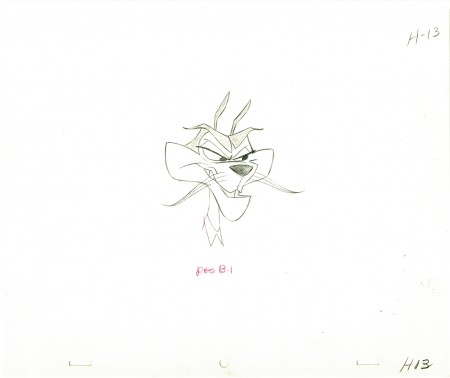
And this is an animation drawing I have of
Meowrice, the film’s villain.
.
I have lots of the press material from the period stuffed into a scrapbook I have in storage. Not much of this is available on line, but I did find these two pieces in the NYTimes:
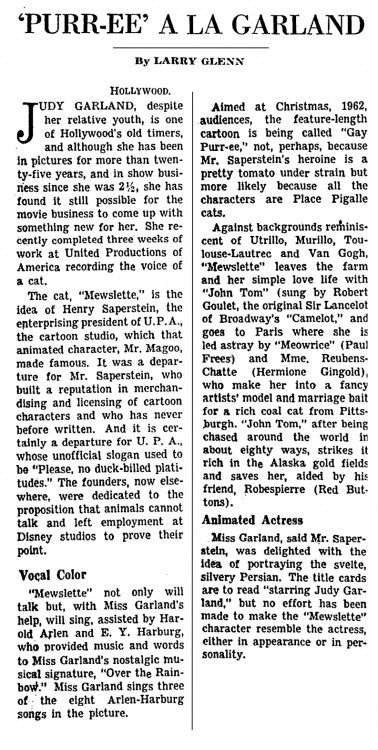
(Click any image to enlarge.)
Here’s the review that was published in the NYTIMES
- GAY PURR-EE
By BOSLEY CROWTHER
December 6, 1962
MOVING (for the second time) into the animated feature domain created by Walt Disney, U.P.A. Productions has contributed a pretty, pleasant, seasonal package for family audiences called “Gay Purr-ee.” The contents of this Warner release, which opened yesterday in neighborhood theaters, should make anybody’s mouth water, including Mr. Disney’s.
Consider: Judy Garland, no less, and Robert Goulet providing the singing and speaking voice tracks for the leading cartoon roles in a cute fable about a little country cat who goes to Paris. Add a battery of technical wizards who create a fetching color canvas that blends some truly lovely pastels with classical works by art masters. Add also eight new tunes by Harold Arlen, including one knockout. But the picture, hélas, is not.
At the risk of sounding like Scrooge, one U.P.A. fan feels that the film has everything but real wit. And what an opportunity, especially with Mewsette, the dainty little fugitive from Provence (Miss Garland), naïvely involved with some purring city slickers before being rescued by hel stalwart country swain, a champion mouser named Juane-Tom (Mr. Goulet).
Now, with all due respect to the film’s good-natured tone and diverting backgrounds, the first half is rather studied and even familiar, as directed by Abe Levitow and written by Dorothy and Chuck Jones. In contrast to the pictorial wizardry—rearranged Von Gogh landscapes and a tilted, spangled City of Light flavored with Toulouse-Lautrec, Modigliani, Matisse, Cézanne and others—the characters almost pale by contrast.
Mewsette, a nice enough little lady cat, is most interesting when Miss Garland is warbling — superbly — such ballads as “Roses Red” and “Take My Hand, Paree.” The same goes for the villainous Meowrice (Paul Frees), a fairly standard menace with a fine, jazzy theme song, “The Money Cat.” Furthermore, the snug, simple plot is needlessly stretched. Even with little Mewsette pining away in Paris, her would-be rescuer and his sassy, furry sidekick Robespierre (Red Buttons) are way off in Alaska.
The nearest thing to spice is the heroine’s jowly, pink “chaperone,” a shady lady named Mme. Rubens-Chatte (drolly spoken by Hermione Gingold). Even with the songs and the brilliantly stylized backgrounds, one can’t help wondering what a Disney crew would have concocted in earthy slyness and spontaneity.
In the final reel, though, things hit high gear in an old-fashioned chase scramble, against a superbly imaginative panorama of Paris, while the cats prowl the quays and the Notre Dame gargoyles toward a final, funny free-for-all. This portion also contains the film’s visual highlight, as Miss Garland sings one of Mr. Arlen’s great blues numbers written for the screen, “Paris Is a Lonely Town.”
So who needs eggnog for Christmas? “Gay Purr-ee” is a nice, soft drink for all the family.
‘Gay Purr-ee’ Cartoon , screenplay by Dorothy and Chuck Jones; directed by Abe Levitow; produced by Henry G. Saperstein for U. P. A. Productions; presented by Warner Brothers.
At neighborhood theaters. Running time: 86 minutes.
Voice of:
Mewsette . . . . . . . . . . . Judy Garland
Juane-Tom . . . . . . . . . . Robert Goulet
Meowrice . . . . . . . . . . . Paul Frees
Robespierre . . . . . . . . . Red Buttons
Mme. Ruben-Chatte . . . . Hermione Gingold
Articles on Animation &Hubley &UPA 19 Dec 2008 09:07 am
Retreads – Rooty Toot Toot
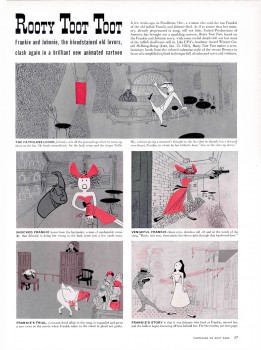
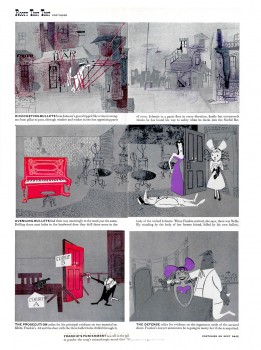
(Click any image to enlarge to a readable size.)
- In 2006 I posted this LIFE Magazine story on Rooty Toot Toot from a March, 1952 issue. They obviously enjoyed the UPA films back then, and luckily for us they posted it on something concrete – like paper.
My reason for posting it, originally, was a UPA celebration that was being screened at the Egyptian Theater in Hollywood. That’s long past, now, but Rooty Toot Toot lives on. I think of this as one of THE greatest animated films of all time. I doubt a month goes by without my watching it anew for inspiration.
The story goes that Stephen Bosustow was furious with John Hubley for taking so long on the storyboard and development of this short. Hubley eventually locked himself in his office and finished the prep to his own satisfaction. That’s how they finished the film. Needless to say, it went over budget.
The 1951 film obviously had world wide resonance. The story of a murder as told from different perspectives took the idea from the 1950 Kurosawa film Rashomon, wherein several people around a campfire tell different versions of a story. Of course, the premise dates all the way back to Chaucer, but there weren’t many film makers doing it at the time. Interestingly enough, Rooty Toot Toot was nominated for an Oscar the same year that Rashomon won a special award for Best Foreign Language film.
After seeing the short for the first time at a special UPA program in 1974, when I was working for the Hubley Studio, I told John that I’d just seen it and was blown away. He gave a short smile, turned and walked out of the room. He obviously didn’t want to talk about it. I guess the thorny years of the McCarthy era forced him to deny his own work of genius from a hellish period.
Just prior to the Egyptian screening, Amid Amidi posted some UPA crew photos on the Cartoon Modern site.
Amid has also posted some great art from the film on that same Cartoon Modern site.
part 1 part 2 part 3 part 4
Animation &Animation Artifacts &Daily post &UPA 28 May 2008 08:09 am
In Toon
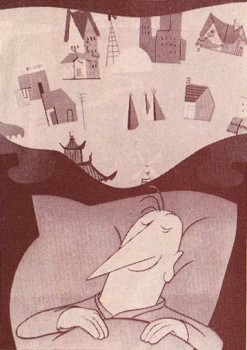 Tee Bosustow has been making podcasts of the many interviews he recorded for the documentary he has in progress. This is a history of the UPA studio. Slowly these interviews are appearing on his site.
Tee Bosustow has been making podcasts of the many interviews he recorded for the documentary he has in progress. This is a history of the UPA studio. Slowly these interviews are appearing on his site.
You can hear Tee’s interviews with the likes of Dave Hilberman, Barrie Nelson, Bill Melendez, Tissa David, Derek Lamb, Mark Kausler, Howard Beckerman and many others. Go here and pick your poison. More interviews are added weekly.
One he recorded with me has just gone up. I seem to speak at an enormous speed and giggle throughout. The recording was done as we’d just completed our film, The Man Who Walked Between the Towers. To hear it go here.
Tee is also selling, on this site, a good book edited by Amid Amidi, Inside UPA. If you’re a fan, you have to search out a copy of the book. It’s a beauty. The book is predominantly a collection of amazing photographs of the studio and artists of UPA in its heyday.
Just to fill out this post, here’s a Grim Natwick drawing of Nellie Bly from Rooty Toot Toot (minus a face.) It seemed appropriate to match it with Tee Bosustow’s site.
Daily post &Layout & Design &UPA 10 Apr 2008 08:26 am
Shirley Silvey’s King & Joe
On March 6th, I posted a piece on the UPA short, The King and Joe. This film was done for television as part of the Gerald McBoing Boing show. I wrote a very brief piece about it and conjectured that the art was inspired by Paul Klee. (I had – and still have – a specific painting in mind which almost exactly matches a pan from the film. However, I haven’t been able to find a copy of that painting.) Boy, was I wrong.
I received this note from Shirley Silvey, one of the designers of the film, and I’d like to post it. I hope that meets her approval.

A color still from Amid Amidi’s great book, Cartoon Modern.
He credits director: unknown. Now, we know the director’s name.
My name is Shirley Silvey and I worked on “The King and Joeâ€. In 1956, near the end of the Gerald McBoing Boing Show, UPA hired Ed Levitt, a well known director/storyboard/layout and design artist to do some shorts. Ed wanted me to work with him, so I was hired as well. While Ed was a veteran in animation, I was a novice. With the two of us and two animators together in the same room, we started on the first short entitled “The King and Joeâ€.
As far as the short itself, you questioned whether it was any good. We never thought or considered Klee for reference. As soon as we began, I purchased a book (published 1929) entitled “History of Ancient Persiaâ€. I used the book’s photos of the sculptures and bas-relief that was created during the reign of the Persian Achamedian kings andI used the 1929 landscapes of Iran as my only references.
The length of the short was determined by its song that had been recorded before we started. I do remember the long pan you commented on. Klee? No. I just drew highly designed arab tents and sand dunes. In regards to “Magoo’s 1001 Arabian Knightsâ€, I did layout, storyboard and character development under the art director Bob Dranko and animation director Abe Levitow.
I hope this explanation will exorcise the short from your brain. The King and Joe was just a little cartoon created by 2 artists who had fun doing it.
Regards,
Shirley Silvey
(I’d also written a snide comment in my original post saying that the film has haunted me for years and hoped writing extensively about it would “exorcize the film from my brain.” That’s her reference, and I deserved it.) The film was more than a “little cartoon” but still survives and compares well to most of the mediocre material done today.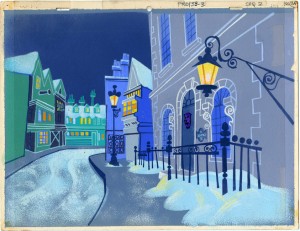
There’s an excellent interview with Shirley Silvey at the Toonarific Cartoons. The focus of the interview seems to be her work at Jay Ward’s studio, Bullwinkle and Hoppity Hooper, but there’s quite a bit more about work with Abe Levitow and UPA.
Several of her BG layouts appear on the new Abe Levitow site. One of these appears to the right.
See Magoo’s Christmas Carol and 1001 Arabian Nights.
__________________________________BG Layout – Shirley Silvey / Painting – Bob Inman.
Frame Grabs &UPA 06 Mar 2008 09:11 am
The King and Joe
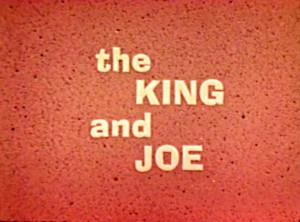 - The Gerald McBoing Boing show aired in 1956. This program collected many new shorts hinged with some small bits featuring the title character. Many of the shorts were built around themes such as artists or inventors or even circuses. Some of these shorts were collected onto vhs tapes. To my knowledge, they haven’t been released in dvd.
- The Gerald McBoing Boing show aired in 1956. This program collected many new shorts hinged with some small bits featuring the title character. Many of the shorts were built around themes such as artists or inventors or even circuses. Some of these shorts were collected onto vhs tapes. To my knowledge, they haven’t been released in dvd.
Many of the shorts were inspired by different artists’ work, even if they had no real relevance to the story. The short, The King & Joe tells the story of the invention of the game of chess. The design style was pulled from some of Paul Klee’s work, and I’ve always found this short curious. It’s a bit long and it feels longer to sit through (as do many of the films in this series), but the artwork sometimes is inspired.
Mind you, this is not a great short; as a matter of fact, I’m not sure it’s really even good. However, it’s stuck with me for years.
Maybe as a way of exorcising it from my brain, I decided to look at it a bit closer. I’ve chosen to pull some frame grabs to show off this short. The color of the print is quite deteriorated; I’ve tried to enhance the images displayed here. Hopefully, my choices are close.
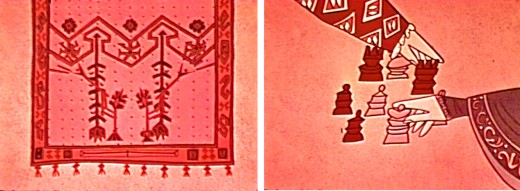
_________________(Click any image to enlarge.)
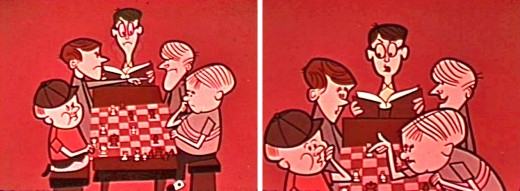
__They use the device wherein the story starts with current day characters playing chess,
__and we go back in time to reveal the history of the game.
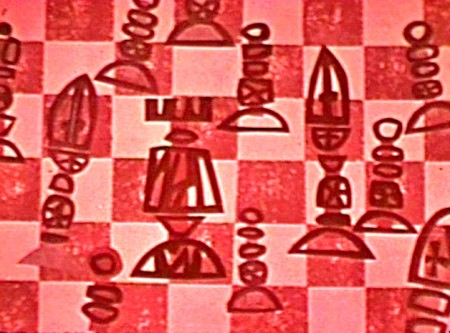
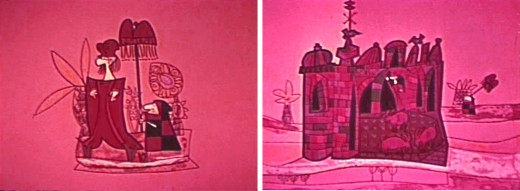
__Basically it’s the story of warring Arabic nations who ultimately play a game to
__conclude the endless battles.
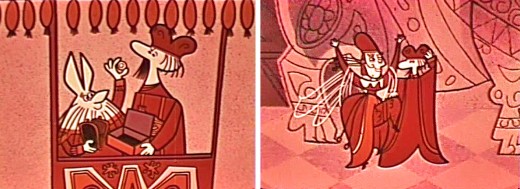
__Elements in the design of this piece remind me of work UPA would do later in
__1001 Arbian Nights with Mr. Magoo.

__This BG pan is more like one of Klee’s paintings than anything else in the short.
